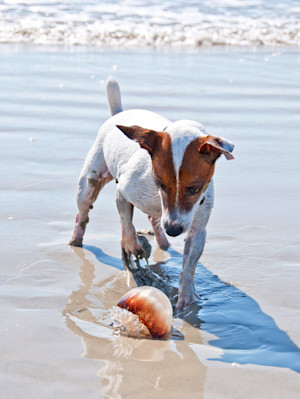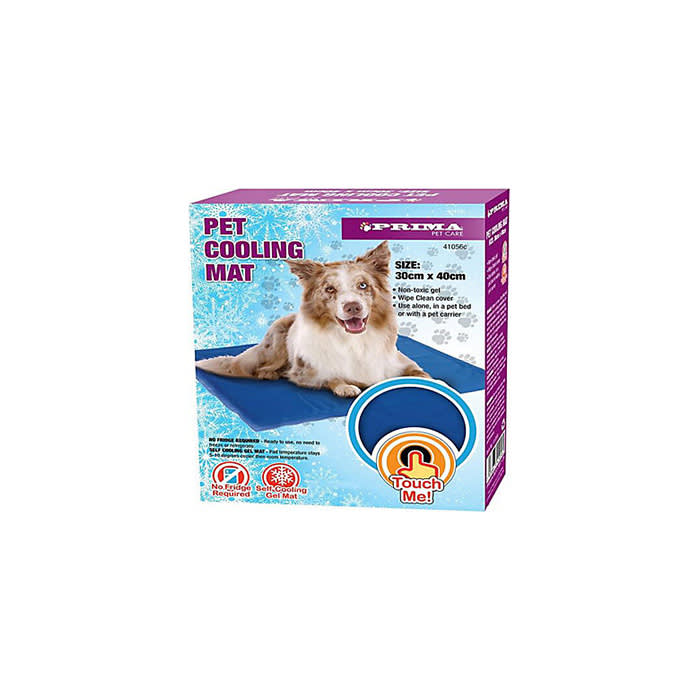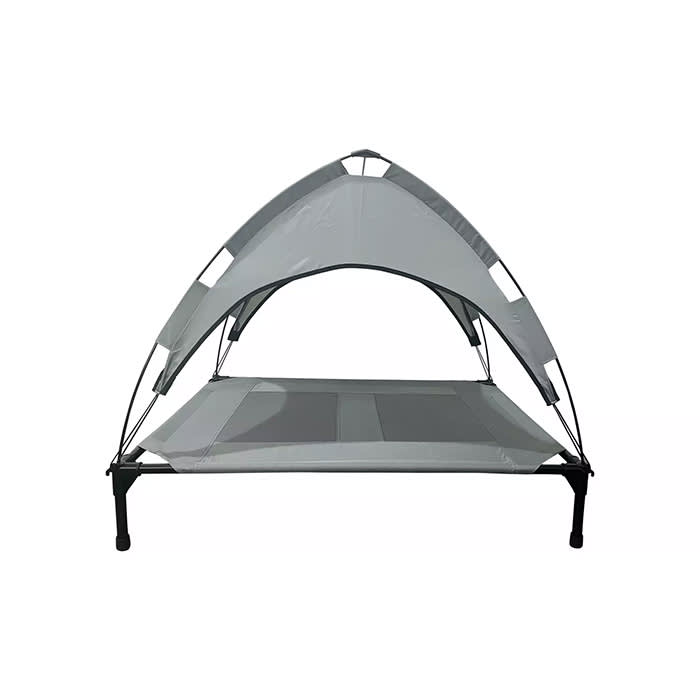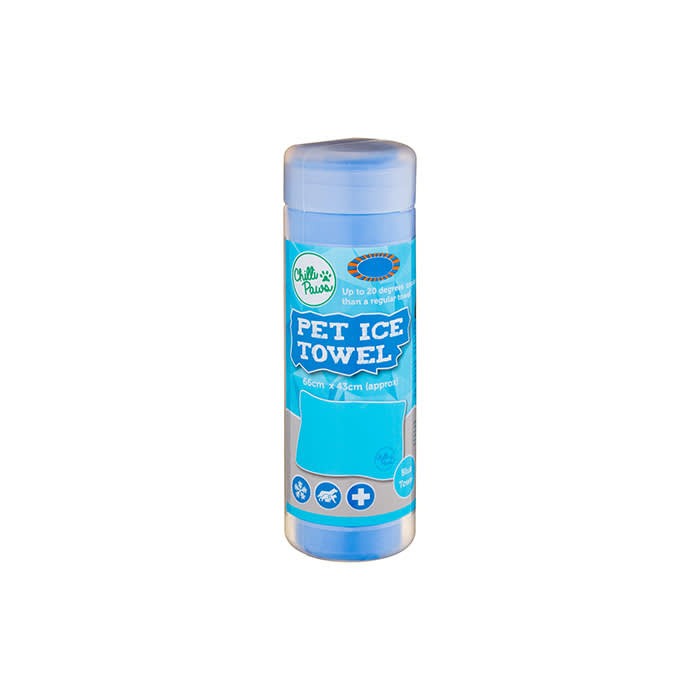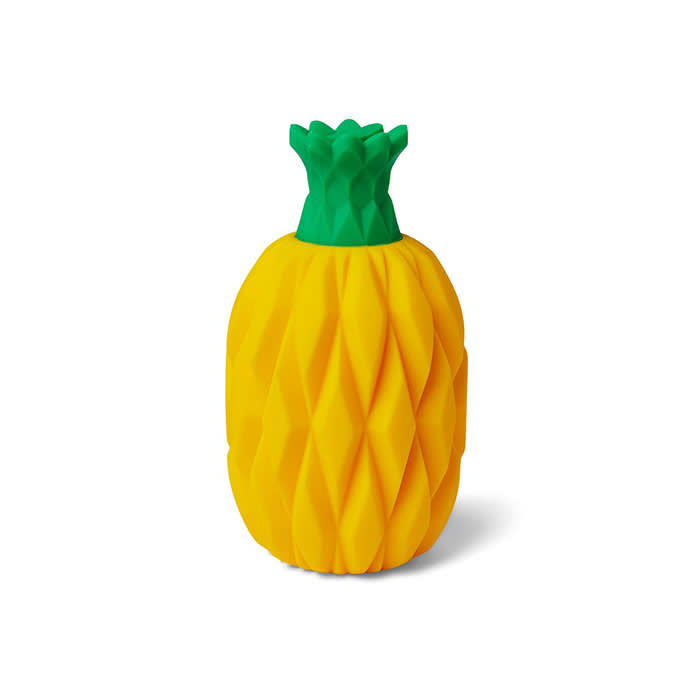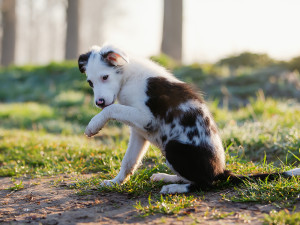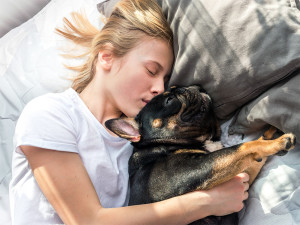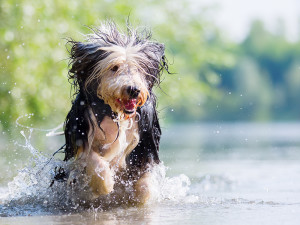How to Keep Your Dog Cool This Summer as Animal Charities Warn of Hot Spell
Animal welfare charities and veterinary organisations have teamed up to urge on pet parents to get clued up ahead of the warm weather

share article
As the UK gears up for a hot spell this summer, dog parents are being urged to take proactive steps against the dangers of high temperatures for pups.
Animal welfare charities and veterinarian organisations, including the RSPCA, Battersea Dogs & Cats Home and the British Veterinary Association (BVA), have joined forces to provide vital advice on preventing heat-stroke and other heat-related illnesses in dogs.
“With a spell of warm weather approaching, many of us will be planning some great dog walks or trips to the park or beach – and we all want to enjoy quality time with our pets. But it’s really important we as dog owners arm ourselves with the right knowledge and techniques to keep our pets cool and help them to cool down after exercise, to avoid the devastating consequences of heatstroke – which can develop really quickly,” says Esme Wheeler, a dog welfare expert at the RSPCA.
“We’re encouraging owners to do some ‘pet homework’ now to prepare as much as they can for the heat and keep their animals safe, and to always remember when it comes to pets in hot weather, if in doubt, don’t go out.”
Below, the essential tips and latest advice from leading pet experts to make sure you’re armed with the very best knowledge to ensure your dog is comfortable and healthy throughout the summer.
Why it’s important to keep your dog cool
Dogs are particularly vulnerable to heat-stroke and overheating due to their inability to regulate their body temperature as efficiently as humans. Unlike us humans, dogs cannot sweat through their skin and rely primarily on panting and releasing heat through their paw pads and nose to regulate their body temperature.
When the external temperature is too high, panting becomes ineffective and their body temperature can quickly escalate. Recognising the signs and taking proactive measures to cool your dog can prevent severe health issues and even save their life in extreme circumstances.
Factors increasing heat-stroke risk in dogs
All dogs can suffer from heat-stroke, but certain factors increase the riskopens in a new tab. Older dogs, overweight dogs and breeds with flat faces (brachycephalic breeds such as Pugs and French Bulldogs) are particularly susceptible. “All animals are at risk; but it’s important owners understand other factors that could increase that risk even further,” says Esme. “Taking the time now to identify how to minimise your dog’s risk could just save their life.”
According to the Royal Veterinary College (RVC), heat-stroke can develop in dogs at temperatures as low as 16.9Copens in a new tab, underscoring the importance of vigilance even on moderately warm days.
“We all want to keep our pets safe in the heat – but some owners may not realise that even at lower temperatures in the teens (celsius), animals are still very much at risk,” says Esme. “Evidence from RVC research showed the average ‘feels like’ temperature for dogs to develop heatstroke was just 16.9C.”
How to recognise the signs of heat-related illness
It’s essential to recognise the early signs of heat-related illness in dogs to act swiftly. Symptoms of mild heat-related illness include:
Excessive panting that doesn’t subside with rest.
Difficulty breathing, especially if accompanied by unusual noise or a blue/grey tinge to gums or tongue.
Unusual tiredness or lethargy.
Changes in behaviour, such as lying down more frequently and stumbling.
Reluctance to play.
If untreated, these symptoms can progress to heat-stroke, which is characterised by:
severe difficulty breathing
diarrhoea and/or vomiting
seizures
bleeding under the skin
collapse and unresponsiveness
How to keep your dog cool
Emily Hall, a lecturer and lead researcher on canine heat-stroke at the Royal Veterinary College (RVC), highlights the urgency of this issue: “Dogs die in hot cars and on hot walks, but heat-stroke can be prevented. If in doubt, don’t go out. If there is concern that a dog has overheated, our advice is: cool first, transport second.”
Plan walks during cooler times of the day
To avoid exposing your dog to the hottest parts of the day, schedule walks early in the morning or late in the evening when temperatures are lower. Not only does this minimise the risk of overheating, but it also provides a more comfortable experience for both of you.
The animal welfare charities and veterinary organisation coalition is using hashtags such as #DogsAtDawn and #DogsAtDusk to promote safe walking times. Remember, when in doubt, don’t go out.
Provide plenty of fresh water
Hydration is key to keeping your dog cool. Ensure your dog has access to fresh, cool water at all times. Place multiple water bowls around your home and garden to encourage frequent drinking. For an extra treat, consider giving your dog ice cubes or frozen dog-friendly treats.
Create ‘cool zones’ at home
Identify the coolest areas in your home where your dog can retreat from the heat. Use fans or air conditioning to keep these spots comfortable. Avoid placing your dog in rooms with direct sunlight or conservatories that can trap heat (even simply shutting blinds or curtains can help with this). A cool, shaded area with good ventilation is ideal.
Use wet towels and cooling mats
Draping a wet towel over your dog or providing a cooling mat can help lower their body temperature. These products are designed to offer a refreshing surface for your dog to lie on, providing immediate relief from the heat. (If using a wet towel from home, be sure to refresh the towel often or remove it entirely when it has warmed up, as it can have the opposite effect and trap in warm air against your pup in some cases.)
Avoid hot pavements
Hot pavements can burn your dog’s paw pads and increase their body temperature. Test the pavement with your hand; if it’s too hot for you, it’s too hot for your dog. Stick to grassy or shaded areas for walks, or wait until it cools down.
How to cool your dog after exercise
Even after a walk or play session, dogs can continue to heat up. Research from the Royal Veterinary College (RVC) showed many dogs will continue to get hotter opens in a new tab, highlighting an urgent need for owners to proactively cool their dogs down after exercise, if there is a risk of overheating.
“Dogs die in hot cars and on hot walks, but heat-stroke can be prevented, so if in doubt, don’t go out. If there is concern a dog has overheated our advice is: cool first, transport second,” says Emily Hall, lecturer and lead researcher on canine heat-stroke at the Royal Veterinary College.
“The longer we allow our dogs to remain hot, the more damage occurs, increasing the risk of heat-stroke fatalities,” she adds. “If you observe early signs of your dog overheating, simply stopping exercise may not be enough, which is why we’re asking owners to think ahead and plan how they would cool their dogs in an emergency, especially before putting them into a vehicle or back in the home.” Here’s how to cool your pup down promptly to avoid heat-stroke:
Move to shade and encourage rest
Immediately move your dog to a shaded area and encourage them to rest. Reducing activity will help their body start cooling down naturally.
Use water and air movement
Cool your dog using water. “Use whatever water you have available – provided it is cooler than the dog, and pour the water over their body avoiding the head, ideally combined with air movement such as a handheld fan,” says Emily.
Prepare your vehicle first
If you need to drive after your walk, lower the windows and turn on the air conditioning to cool down the interior before placing your dog in the car. Make sure the seats are not too hot, especially if they’re leather. Continuous air movement over the dog can help maintain cooling during the ride.
Shocking polling from the RSPCA also revealed that only 58 percent of people would not leave their dog inside a car on a warm day – meaning over 40 percent might be potentially putting their pets at risk in hot cars during bouts of warm weather. It goes without saying you should never leave your dog in your car, especially on a warm day.
Monitor for signs of overheating
Be vigilant for symptoms of heat-related illness, such as excessive panting, difficulty breathing, unusual tiredness or changes in behaviour. If you notice any signs, cool your dog immediately and contact your vet.
What to do in an emergency
If your dog shows signs of severe heat-related illness, such as vomiting, diarrhoea, seizures or collapse, act quickly:
1. Stop all activity and move your dog to a cool, shaded area.
2. Wet their body with cool water, avoiding the head.
3. Use fans or air conditioning to create air movement.
4. Offer small amounts of cool water to drink.
5. Contact your vet immediately for advice and further instructions.
How to prepare your dog for hot weather this summer
The combined advice from leading animal welfare organisations is pretty clear: preparation and vigilance are key to keeping your dog safe during hot spells. Planning walks during cooler parts of the day, ensuring your dog stays hydrated and knowing the signs of heat-related illnesses are all critical day-to-day tips, but there are other things pet parents can be doing in advance of warm weather to ensure their pup stays safe in the heat:
Weight management: regularly check your dog’s weight with your vet to ensure they are at a healthy weight.
Grooming: discuss the best grooming plan for hot weather with your vet and/or groomer, especially if your dog has a thick coat.
Weather forecasts: get into the habit of checking the daily weather forecast, paying particular attention to the ‘feels like’ temperatures.
Workshops: sign up for ‘Cool Dog Summer’ workshopsopens in a new tab run by the RSPCA to learn more about keeping your dog safe during the hot weather.
The best dog cooling products
Investing in the right products can make a significant difference in keeping your dog cool during the summer months. Here are some highly recommended items:
References
How To Keep Pets Safe In The Summer Heat, According To Experts | Forbesopens in a new tab
Top tips for keeping your dog cool – and safe – in summer | Blue Crossopens in a new tab
Keeping your dog cool in summer | The Kennel Clubopens in a new tab
How to keep dogs cool in the summer | Battersea Dogs & Cats Homeopens in a new tab

Orla Pentelow
Orla Pentelow is a freelance journalist and copywriter based in London. When not at her desk she’s out and about with her rescue dog, Luna, who works primarily as chief distractor.
Related articles
![dog running through a field of yellow flowers jumping up at their pet parent]() opens in a new tab
opens in a new tab5 Ways To Keep Your Pup Safe This Spring
There’s no need to worry, if you know what to look out for
![a woman pets her dog in a coat while outside in the snow]() opens in a new tab
opens in a new tabHow Cold is Too Cold for Dogs?
If your teeth are chattering, theirs probably are, too
![Mixed-breed puppy licks its paw in the grass]() opens in a new tab
opens in a new tabWhat to Know About That Hot Spot on Your Dog
Unfortunately, we're talking about a ‘summer sore’, not a trendy east London nightclub
![Girl sleeping with her French Bulldog dog in bed.]() opens in a new tab
opens in a new tabA New Study Finds Flat-Faced Dogs Get Pretty Crappy Sleep
It’s one of several health problems facing brachycephalic breeds
![Bearded Collie running in a lake]() opens in a new tab
opens in a new tabWhen Drinking Too Much Water Is Deadly
How to keep your swimming dog safe

